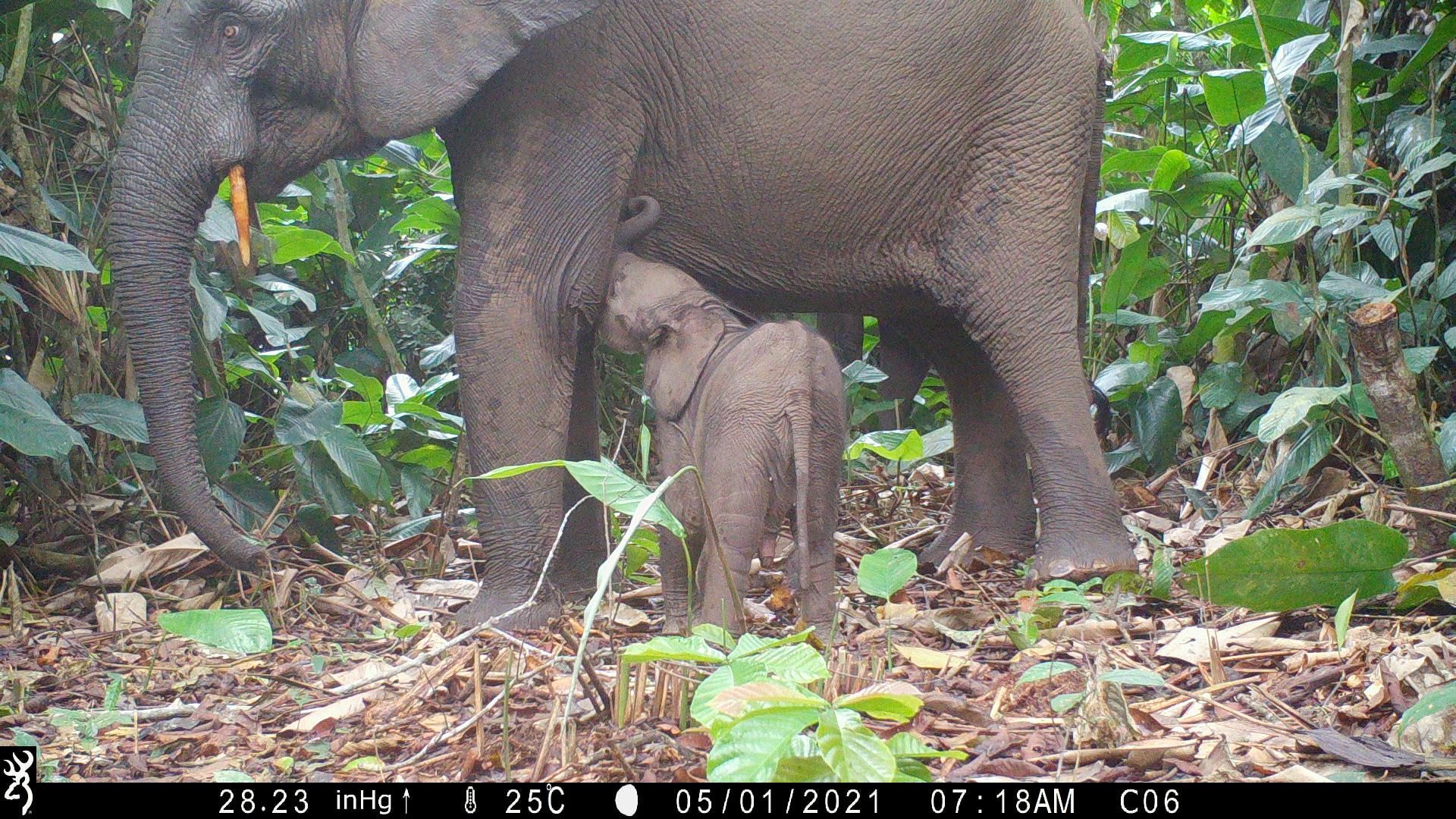The research was led by Utrecht University with support from WWF and the Wildlife Conservation Society (WCS), and was published in Nature on 10 April 2024. It underscores the effectiveness of measures implemented in FSC-certified forest concessions to safeguard wildlife.

Joeri Zwerts / Utrecht University
Key findings: FSC-certification is a haven for larger mammals
By meticulously counting individual animals and strategically positioning camera traps, the research conducted by Joeri Zwerts confirmed that certified concessions notably harbor a larger population of large mammals – 2.7 times more for mammals over 100 kg, such as gorillas and forests elephants, and 2.5 times more for mammals from 30–100 kg, such as leopards and chimpanzees – when compared to non-FSC-certified areas.
In addition, the encounter rates observed of large mammals in FSC-certified forests were comparable to published data from recently monitored protected areas in the Congo Basin region.
On the other hand, the number of smaller mammals observed was similar between FSC- and non-FSC certified concessions – as large mammals are usually the first species to disappear due to poaching and hunting – painting a picture of less biodiversity due to unsustainable forest practices in the latter forests. The effects were similar in both the Republic of Congo and Gabon.
Clear link between hunting and biodiversity loss
The research emphasizes the pivotal role of hunting in biodiversity loss, highlighting the scarcity of hunting signs and increased wildlife traces in certified concessions. Certified forestry entities’ proactive measures, such as blocking old logging roads, establishing checkpoints, and supporting alternative protein sources for local populations, have significantly curbed illegal hunting. As a result, communities living around FSC-certified concessions have consumed less wild meat, which reduced the risk of spreading diseases of wildlife origins.
Beyond wildlife conservation, the study highlights the broader positive impact of FSC certification. The preservation of large mammals positively influences seed dispersal, nutrient cycling, and forest carbon storage. In a 2019 study published in Nature Geoscience, researchers estimated a potential 7% less carbon in tropical forests without the presence of elephants.
Joeri Zwerts / Utrecht University
Responsible forest management: the key to biodiversity preservation
The study shows how sustainable forestry practices can contribute to the conservation of large mammal populations and to the protection of existing tropical forests. To a greater extent, the local communities derive economic and social values from certified forestry, as opposed to forest-clearing activities such as palm oil or soy cultivation.
According to Joeri Zwerts, this study – the first to compare so many different forest areas at the same time – “was a large and ambitious project that took five years and involved hundreds of local employees. We had to convince both certified and non-FSC certified companies to participate in the study. It was hard work under challenging conditions, but the knowledge we gained will make an important contribution to the protection of animals in tropical forests.”
Kim Carstensen, FSC International’s Director General said: “Utrecht University's study reinforces FSC's core principles and our commitment to responsible forest management. This research affirms the vital role of FSC certification in fostering diverse ecosystems and protecting endangered species in tropical forests while benefiting both local communities and the environment."
For Dr. Peter Alele, FSC Africa Regional Director, “The study in the Congo Basin, a vital green lung of our planet, shines a spotlight on the critical role of FSC certification in responsible and sustainable natural resource management. Its findings provide compelling evidence that FSC solutions empower governments to achieve national and international deforestation and biodiversity goals, all while fostering improved livelihoods for local communities. This win-win approach offers a clear path towards a sustainable future for the Congo Basin and beyond.”
Methodology: rigorous surveillance unveils compelling insights
Conducted by Joeri Zwerts and his team, the study published in the science journal Nature employed 474 camera traps across 14 logging concessions — seven FSC-certified and seven non-FSC certified — in the Congo basin. Over a three to four years of fieldwork (two to three months monitoring period per concession), these traps snapped 1.3 million images, capturing approximately 55 mammal species including leopards and gorillas, as well as various endangered species.
Joeri Zwerts / Utrecht University
For media enquiries, please contact media@fsc.org
For more information, please refer to the full study published on Nature on 10 April 2024.
